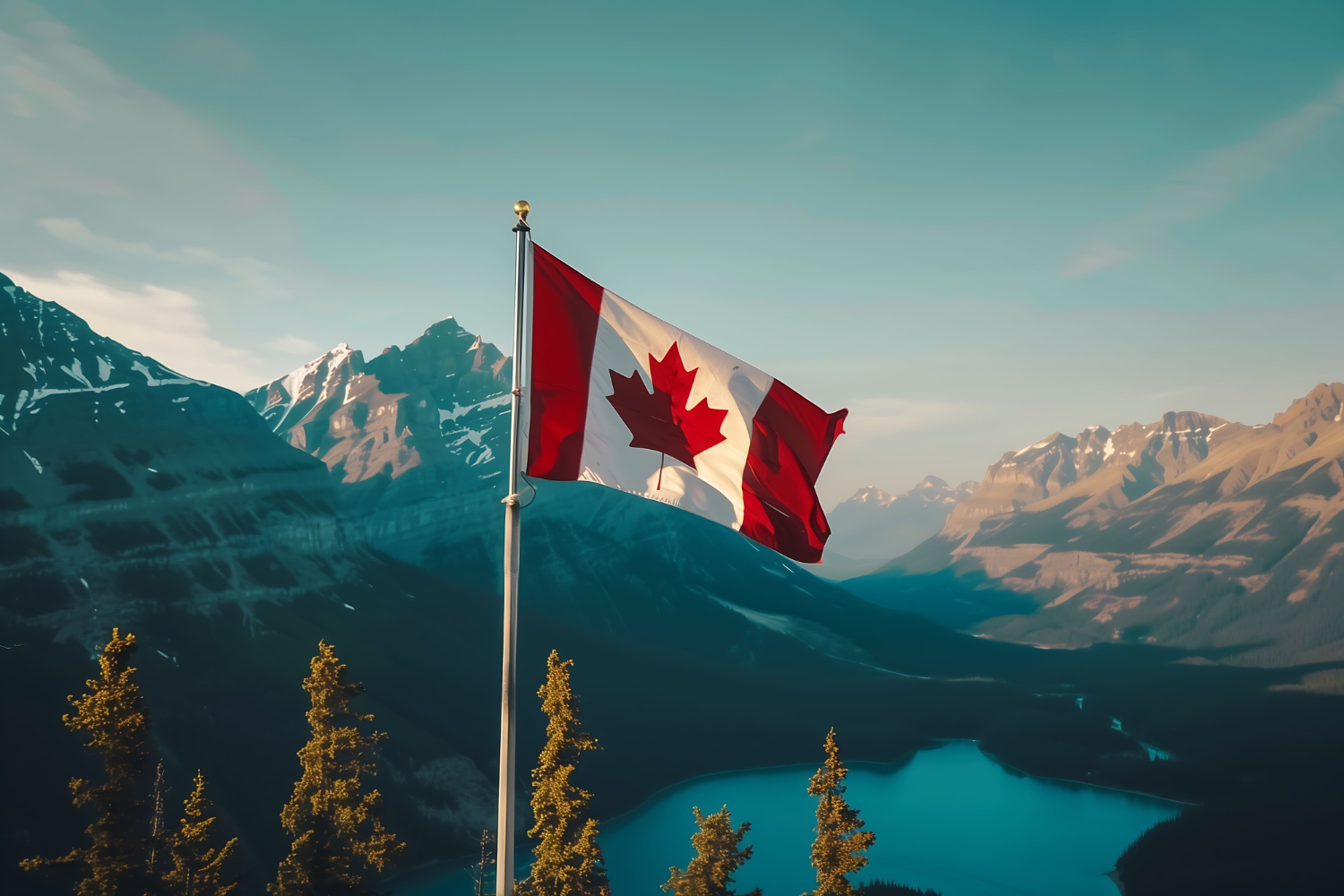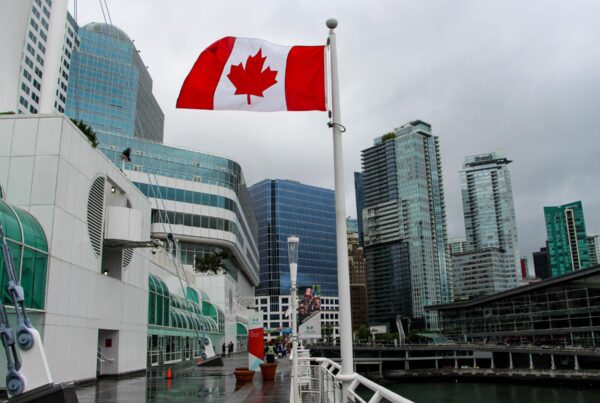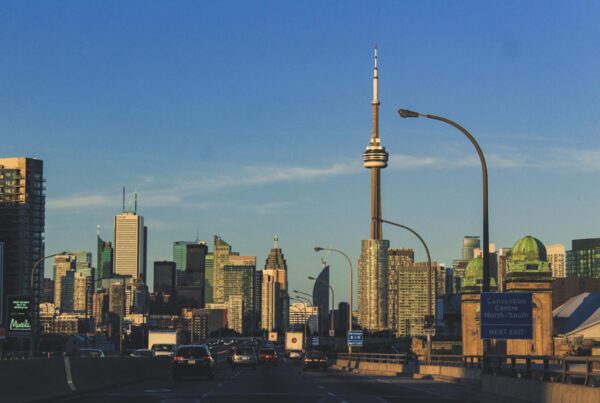Permanent resident Canada targets show a major transformation as immigrants now comprise 29% of the Canadian labor force but only 23% of the population. The government’s new immigration plan takes a stable direction by setting annual targets of 380,000 new permanent residents from 2026 through 2028. This target reflects an adjustment from earlier plans that projected 395,000 for 2025 and aimed for 416,500 by 2026.
The new immigration rules in Canada focus on economic development. The government has allocated 64% of all PR spots to economic categories, up from 59% in 2025. Family sponsorship numbers will decrease from 24% to 21%, while humanitarian admissions will reduce from 14.8% to 13%. Our Vancouver firm’s experienced immigration lawyers can help you understand these changes and find the best path for your permanent resident card Canada application.
Canada Sets Permanent Resident Targets at 380,000 Annually
The Government of Canada has shown a new way to handle permanent resident Canada admissions under Finance Minister Carney’s leadership. Canada plans to welcome 380,000 new permanent residents each year from 2026 through 2028. This marks a big change in how the country approaches immigration.

How the 2026–2028 plan compares to previous years
Canada’s new permanent resident target shows a careful slowdown from past years. The country welcomed 483,640 immigrants as permanent residents in 2024 and reduced this number to 395,000 in 2025. The original plan had set higher goals of 500,000 permanent residents for both 2025 and 2026. This adjustment shows how Canada’s view on population growth has changed.
The share of economic immigration will grow to 64% of all admissions by 2027-2028, up from 58.2% in 2024. This change shows that Canada wants to focus on filling specific job market needs through its latest immigration policies.
Why the government is stabilizing PR levels now
The stable permanent resident targets come as Canada responds to growing pressures at home. The government believes this careful approach will help reduce strain on housing, healthcare, and infrastructure. This new immigration plan should “reduce the housing supply gap by approximately 670,000 units” in the coming years.
This strategic pause lets newcomers settle in better and helps match population growth with available resources. The government plans to bring down the temporary resident population to less than 5% of the total population by late 2027. This shows a detailed plan to manage immigration in a way that works long-term.
Breakdown of economic, family, and humanitarian categories
The 2026-2028 Immigration Levels Plan sets clear priorities:
Economic class numbers will reach 239,800 in 2026 and grow to 244,700 in the following years. This includes Federal High Skilled programs and Provincial Nominee Programs that help fill crucial job shortages.
Family reunification numbers will see small decreases—from 84,000 in 2026 to 81,000 in 2027 and 2028. These still make up about 21.3-22.1% of all admissions.
Humanitarian admissions, including refugees and protected persons, will have 56,200 spots in 2026 and 54,300 each year after. This keeps Canada’s humanitarian commitment at 13% of total immigration.
These changes to permanent resident Canada requirements are significant. Our Vancouver immigration lawyers can help you understand if you qualify under the new economic programs. We know how to prepare strong applications that fit with Canada’s immigration plan for 2025 and beyond.
Provincial Nominee Programs and Francophones Gain Priority
Canada’s latest permanent resident system reveals two clear priorities: a major expansion of Provincial Nominee Programs and a boost in Francophone immigration beyond Quebec’s borders.
PNP allocations rise from 55,000 to 92,500 by 2028
The latest plan brings dramatic changes to Provincial Nominee Programs. PNP allocations will surge from 55,000 in 2025 to 91,500 in 2026—this is a big deal as it means that the numbers will grow by 66%. The figure will reach 92,500 in both 2027 and 2028. These numbers almost match the record-breaking targets of 2023 and 2024, which exceeded 105,000 nominations.
This radical alteration comes after 2025’s temporary reduction, when IRCC scaled back PNP spaces to rebalance economic immigration priorities. The adjustment strengthens provinces to select immigrants who best fit their regional economic and labor market needs.
French-speaking immigrants outside Quebec see increased targets
Ottawa has set higher targets at the time for Francophone permanent residents settling outside Quebec. The new plan aims to increase Francophone admissions to 10.5% of all newcomers outside Quebec by 2028. This supports the broader goal of reaching 12% by 2029. The momentum builds on 2024’s success, when Canada surpassed its 6% target by achieving 7.2% (30,550 individuals).
The targets follow a steady increase: 8.5% in 2025, 9.5% in 2026, and 10% in 2027. These numbers might seem small, but they show Canada’s steadfast dedication to strengthening its bilingual character across the nation.
 How these changes support regional labor market needs
How these changes support regional labor market needs
These initiatives tackle Canada’s regional workforce challenges head-on. The expanded PNP allocations especially help healthcare, skilled trades, construction, technology, and early childhood education sectors—jobs that often appear on provincial in-demand lists. These changes benefit candidates who don’t deal very well with federal Express Entry programs, especially those in TEER 4 or 5 occupations and foreign nationals seeking permanent residence as business owners.
Francophone immigration’s impact goes beyond preserving language—it drives economic growth. French-speaking immigrants serve vital roles in education, healthcare, early childhood development, and social services—areas where bilingual skills create significant value.
Our Vancouver immigration lawyers excel in both PNP applications and Francophone immigration pathways. We offer detailed guidance on eligibility requirements, application preparation, and strategic planning to help you succeed under these new permanent resident Canada priorities.
Temporary Residents and Refugees Abroad Face Setbacks
Canada has made drastic cuts to its temporary residence programs, which creates major hurdles for immigrant groups. The Carney government now prioritizes permanent resident programs while cutting back temporary pathways that many people use as stepping stones toward permanent status.
International student permits cut by 50%
The new study permit targets will drop from 305,900 in 2025 to 155,000 in 2026. The numbers will decrease further to 150,000 each year for 2027 and 2028. This big cut shows a complete change in Canada’s stance on international education. The effects of these strict policies show up in recent data. Canada gave out only 36,417 student permits between January and June 2025, which is 70% less than the 125,034 permits issued in the same months of 2024.
Temporary foreign worker entries reduced by 37%
Foreign worker numbers will see sharp drops too, going down from 367,750 to 230,000 in 2026. The numbers will fall more to 220,000 in the years after. These numbers match current trends, as temporary foreign worker arrivals have already fallen by 50% in 2025. The Temporary Foreign Worker Program will take a big hit with its yearly target dropping to 60,000 in 2026 from 82,000.
Privately sponsored refugee quotas drop by 30%
Humanitarian programs face big cuts. The privately sponsored refugee spots will shrink from 23,000 in 2025 to 16,000 in 2026. Government-assisted refugee targets will decrease from 15,250 to 13,250. The program has more applicants than available spots, so Groups of Five and community sponsor applications are on hold until December 31, 2025.
Humanitarian PR spots for Ukrainians, Afghans, and others decline
Special humanitarian programs will have fewer spots, dropping from 10,000 to 6,900 in 2026. The numbers will go down more to 5,000 yearly for 2027-2028. People from Sudan, Ukraine, and Hong Kong looking for permanent resident status through humanitarian paths will compete for just 5,800 spots in 2026. Wait times now range from 12 months to 50 years.
Our Vancouver immigration lawyers help clients understand these new immigration rules in Canada. We find workable paths through the changing canada immigration plan 2025 framework. This helps people with temporary status who want to apply for permanent resident card Canada status.
New PR Pathways Offer Hope for Select Groups
Canada’s immigration rebalancing brings new permanent resident Canada pathways that offer fresh hope to select groups already living in the country. These new initiatives will help thousands of people who have been waiting to secure their immigration status.
One-time transition for 33,000 work permit holders
Finance Minister Carney has created a special pathway that will help up to 33,000 work permit holders become permanent residents during 2026 and 2027. We focused on people who built strong community ties, paid their taxes regularly, and contributed by a lot to Canada’s economic growth. This program might help senior managers who lost their Arranged Employment points earlier in 2025.
115,000 protected persons to get PR status
The government launched a new initiative that will help about 115,000 Protected Persons get permanent residence over the next two years. These numbers won’t affect regular permanent resident targets. This change will help clear a huge backlog of nearly 150,000 applications. Without this help, approved refugees would wait more than eight years to get permanent status.
How immigration lawyers in Vancouver can help with eligibility and applications
These new immigration rules in Canada need expert guidance to navigate properly. Contact our team who can help you determine if you qualify for these initiatives. Our Vancouver firm provides detailed support through the permanent resident card Canada application process. This support will help you maximize your chances for a successful transition under these limited-time pathways.
Key Takeaways
Canada’s new immigration plan under Finance Minister Carney brings significant changes that will reshape permanent residence pathways and affect thousands of current and prospective immigrants.
• Permanent resident targets stabilize at 380,000 annually from 2026-2028, down from previous projections of 416,500, with 64% allocated to economic categories
• Provincial Nominee Programs see massive expansion to 92,500 spots by 2028, nearly doubling from 55,000 in 2025 to address regional labor shortages
• Temporary residence programs face dramatic cuts: student permits slashed by 50% to 150,000, foreign worker entries reduced by 37% to 220,000
• New transition pathways offer hope for 148,000 people: 33,000 work permit holders and 115,000 protected persons can gain permanent residence through special initiatives
• French-speaking immigrants outside Quebec gain priority with targets rising to 10.5% of admissions by 2028, supporting Canada’s bilingual identity
This strategic shift prioritizes economic immigration and regional needs while significantly reducing temporary pathways, making expert legal guidance essential for navigating these complex changes successfully.








